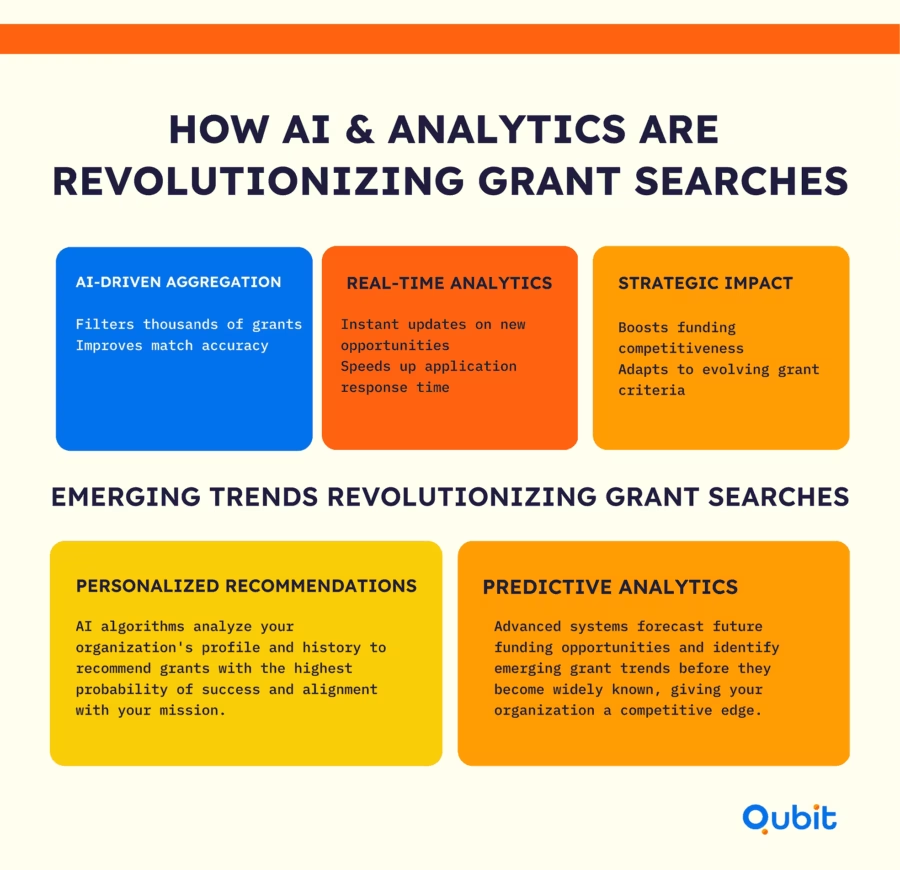Securing grant funding has become a transformative pathway for startups aiming to scale without diluting equity. This article explores how innovative companies have harnessed startup grants to fuel their growth, offering valuable lessons for entrepreneurs seeking alternative funding options. By examining real-world examples, we’ll uncover strategies that have proven successful and highlight the unique advantages of grant funding.
For a broader understanding of financial pathways available to startups, including grants, check out this comprehensive analysis on types of startup funding. It situates grant funding within the wider landscape of capital-raising options, providing essential context for informed decision-making.
Let’s dive into inspiring case studies and actionable insights that demonstrate the power of grants in driving startup success.
What You Need to Know About Combined Analysis and Its Key Elements
Understanding how to optimize grant funding opportunities begins with mastering combined analysis. This approach involves integrating multiple data sources to create a unified view, enabling organizations to uncover effective funding channels. By adopting a structured methodology, startups can streamline their research process and focus on the most promising grant opportunities.
Why Combined Analysis Matters
A unified data approach is essential for identifying and evaluating grant opportunities effectively. When data is fragmented across multiple sources, it becomes challenging to draw actionable insights. Combined analysis eliminates this issue by synthesizing information into a cohesive framework, offering a clearer picture of available funding options.
For example, a Forrester study commissioned by AWS estimates a 33% return on investment from data integration. Organizations that implement enterprise data fabrics have reported up to a 30% increase in operational efficiency.
Key Components of Combined Analysis
To maximize the benefits of combined analysis, it’s crucial to focus on structuring and aggregating grant-specific data. Below are the critical elements:
1. Integration of Multiple Data Sources
Combining data from various platforms provides a comprehensive view of funding opportunities. Tools like Airtable help startups aggregate grant and operational data in one place for easier decision-making.
2. Real-Time Analytics
Real-time data synthesis ensures that startups can compare different grant programs swiftly. Platforms like Tableau offer analytics dashboards that support quick, data-driven decisions.
3. Structured Report Headers
Organizing data into structured headers reduces redundancy and enhances clarity. Using Notion templates specifically designed for grant tracking can help startups categorize applications and outcomes efficiently.
4. Holistic Data Approach
A holistic view of data ensures that no valuable information is overlooked. Tools like Google Looker allow teams to integrate and analyze cross-functional datasets to optimize funding strategy.
Tools to Enhance Combined Analysis
The right tools can significantly improve the efficiency of combined analysis:
- Airtable: Ideal for compiling and organizing large datasets, this tool helps startup founders identify relevant grants quickly.
- Tableau: Provides real-time analytics, enabling users to compare funding opportunities side by side for optimal decisions.
Streamlining Grant Research
Industry-specific grant options are mapped out in how to find grants for startups, helping you spot programs that fit your sector. Combining these insights with a broader, data-driven analysis keeps the search focused on funding channels that matter.
By using structured data and modern tools, startups can cut the time spent on grant research and zero in on opportunities that match their goals. Combined analysis turns this streamlined process into a clear edge in the competition for grant funding.
How Grant Applications Work in Real-World Scenarios
Securing startup grants often requires a blend of strategy, industry-specific insights, and technological innovation. By examining real-world case studies and emerging trends, businesses can uncover effective methods to streamline their grant application processes and maximize funding opportunities. This section delves into success stories from the retail and healthcare industries while exploring how AI and real-time analytics are transforming grant searches.
Case Studies: Industry-Specific Success Stories
Retail Industry: Optimizing Grant Usage Through Data Synergy
An example comes from GrubMarket, which leveraged a USDA grant to scale its operations and improve food supply chain efficiency. By combining funding with operational data analytics, it achieved streamlined inventory control and minimized waste—illustrating the effectiveness of aligning grant funding with measurable business outcomes.
Healthcare Sector: Strengthening Grant Applications Through Data Synthesis
Cityblock Health secured multiple grants, to develop personalized care platforms. By backing its applications with real-time health data and impact metrics, the company demonstrated clear value, securing both funding and trust.
Emerging Trends Revolutionizing Grant Searches

AI-Driven Data Aggregation
Automation and machine learning are reshaping how businesses identify and apply for grants. AI-driven data aggregation enables startups to rapidly sift through vast amounts of information, pinpointing relevant funding opportunities with precision. This trend is particularly beneficial for startups seeking to optimize their grant strategies. By utilizing AI insights, businesses can refine their applications to align with specific grant criteria, increasing their chances of success.
Real-Time Analytics for Faster Responses
The ability to monitor evolving grant opportunities in real time has become a game-changer for startups. Real-time analytics provide immediate updates on new grant announcements, deadlines, and eligibility requirements, allowing businesses to act swiftly. This proactive approach ensures that startups remain competitive in securing funding, especially in industries where timing is critical. Implementing real-time analytics tools can help businesses stay ahead of the curve, adapting their strategies to capitalize on emerging opportunities.
Exploring Alternative Funding Approaches
Startups exploring different ways to raise capital often look beyond equity. One option is debt financing for startups, which offers a structured way to borrow without giving up ownership. A closer look at this approach can help founders understand when and how debt might fit into their broader funding strategy, especially when paired with non-dilutive sources like grants.
By analyzing these case studies and trends, startups can gain valuable insights into effective grant application strategies tailored to their industries. Whether through AI-driven tools or real-time analytics, the path to securing startup grants is becoming increasingly streamlined and accessible.
Conclusion
Securing grant funding requires a strategic approach that combines thorough analysis, structured data segmentation, and practical case studies. These strategies not only enhance your proposal but also ensure that your research aligns with the priorities of potential investors. Actionable insights derived from data-driven research play a pivotal role in crafting compelling applications that stand out in competitive environments.
For startups aiming to maximize their funding success, expert guidance can make all the difference. At Qubit Capital, we specialize in connecting startups with tailored investor opportunities through our Investor Discovery and Mapping service. If you're ready to accelerate your growth and secure the right funding, let us help you find the perfect match for your vision.
Frequently asked Questions
What is the $10,000 grant for small business in California?
The $10,000 grant for small businesses in California is a state-backed initiative designed to offer financial relief and support growth for qualifying businesses. It typically targets companies impacted by economic downturns or operating in underserved communities. Eligibility requirements, application timelines, and documentation guidelines are detailed on official California state websites and grant portals.


 Back
Back



